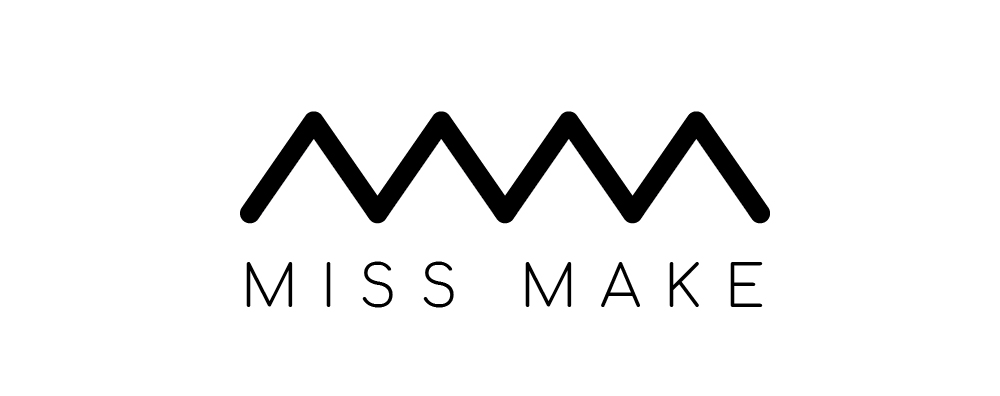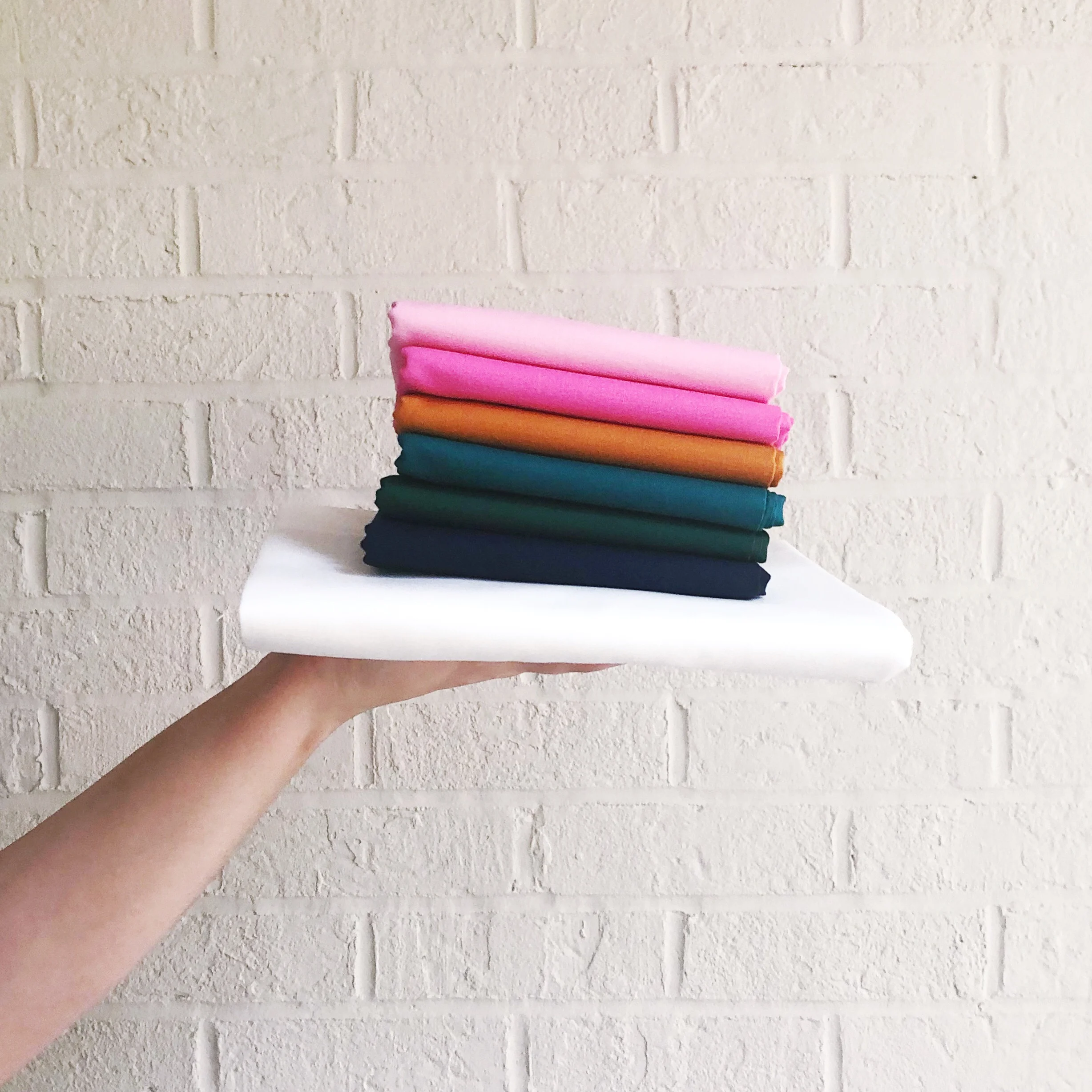Week 2: Prep & Gather Supplies
WEEK 2: PREP & GATHER SUPPLIES
Your fabric is selected, your Looper is designed. Now it’s time to take care of a few more preparatory steps before we start cutting next week. (P.S. if you’re still having trouble picking fabric, there are a few kits left in my online shop!)
But first, let’s talk prizes! This week Sewtopia has generously donated an adorable zip up project bag and a curated bundle of fabric for one lucky winner! (Bundle is winner’s choice, not pictured, look at #sewtopiabundle to get an idea). And to this already amazing prize pack I am adding these crazy-eyed rainbow unicorn scissors and a yet-unreleased Speckled charm pack by Rashida Coleman-Hale for Ruby Star Society! Details for how to enter to win all these goodies are at the bottom of the post.
And as always, any unique photo you share on Instagram throughout the quiltalong with both the hashtags #looperquilt and #looperqal will be entered to win the grand prize of complimentary long arm quilting by Kaitlyn of Knot and Thread Design. Alrighty, on to the quiltalong!
PREP YOUR FABRIC
To prewash, or not to prewash? Some people are ardent prewashers. With quilting, I generally skip prewashing as I find it to be a tedious extra step, and I like the crinkle effect that slight shrinkage gives on the finished quilt, HOWEVER, there are two exceptions. I prewash my fabric if:
It’s a solid. Solid fabrics are dyed, not printed, and dyes bleed more easily than screen printed inks, so it’s a good idea to prewash them. How do you know if your fabric is dyed? Look at the wrong side. If the color is just as saturated on the back, it’s dyed. If you can see a lighter base fabric color on the back, it’s printed. (Note: some printed fabrics have a dyed based cloth, like Speckled shown below on the left. I would treat these as solids and prewash them.)
It’s a bright red printed fabric. Red is an extra volatile color and has a tendency to bleed, solid or print. So if it’s a red print you haven’t used before, I’d prewash those too. (If you’re using the red Spark fabric that’s used in the Looper pattern sample, I’d definitely prewash!)
I prewash like colors together and add a color catcher. (Get a box of those color catchers, they really work!) Before washing I also pink the cut edges of my fabric to minimize fraying in the wash. You can get pinking rotary blades and make this step really fast! You could alternatively zig zag stitch the edges. You could also skip this step and just cut off the frays, but depending on your fabric you could lose a bit of yardage if your fabric frays too far, and for some reason I hate dealing with all the frays so I’d rather spend the extra time pinking. (We all have our arbitrary limits, right??)
If you’ve gone ahead and already cut without prewashing and now you’re worried about fabric bleeding, just wash the finished quilt in cold water and put a few color catchers in and most likely it’ll be ok. Suzyquilts also has a great post for repairing fabric bleeds, which I actually used pretty successfully to heal a ruined, almost brand new lawn quilt that was washed in HOT water with bright blue dyed gingham fabric (not by me. It was a tense and tragic day in our household). So there’s hope.
PREP YOUR PATTERN PIECES
This week you can also spend time getting your paper pattern pieces ready. If you bought the PDF version of the pattern, you’ll need to print the file titled “MM.Looper.printathome.pdf”. It’s very important that you print the file at 100% scale. There is a setting somewhere in your print dialogue box where you can either set the scale to 100% or click “do not scale.” All the Looper coloring blocks should be 2” square once it’s printed so measure them to be sure the scale is correct.
If you’ve never assembled a filed PDF pattern, check out this post for extra help.
If you’ve bought the printed version, you can run over the pattern sheet lightly with a medium dry iron to get rid of the creases. I always do this from the back so I don’t get ink on the iron (check that you don’t get it on your ironing board cover either - this is where a pressing cloth comes in handy!).
Cut out the paper pattern pieces with your paper scissors. For more durability you can glue or trace them onto lightweight cardboard (this would be a good way to reuse empty cereal/cracker boxes). This isn’t absolutely necessary but it will help your pattern pieces last longer.
GATHER SUPPLIES
Here are a few tools you will want to have on hand:
1/4” presser foot. If you’ve never used one on your machine before, now it a good time to figure out if your machine came with one, and if not to get one. The 1/4” foot will make it way easier to maintain an accurate 1/4” seam allowance, especially when you are sewing curves. On a 1/4” foot, the right edge of the presser foot is literally 1/4” away from the needle in center straight stitch, meaning you can just line the fabric edges up with the presser foot when sewing. There’s a very good chance your machine came with one, so check your manual. It might be called something different (for instance Bernina calls it the “patchwork foot”). Protip: make sure you only ever sew a center position straight stitch when you have your 1/4” foot on, otherwise you risk very shockingly break your needle.
Pattern weights. The easiest way to cut the Looper templates out is by weighing them down on top of the fabric and cutting around them with a rotary cutter. You can buy pattern weights, like these adorable spool pattern weights by Foxglove and Field. You can also go to a hardware store and get some large washers, which are really inexpensive and work pretty well. (Get fancy by spray painting them, or decorate them like cookies a la Tilly and the Buttons.) Worse comes to worse you can just grab whatever sort of heavyish small object is nearby, but it’s nice to have designated pattern weights.
Fabric basting glue pen. This magical tool allows you to very precisely baste fabric together with glue that will later wash out. When we sew the curved blocks, I will show you a couple different options for holding the curves together while you sew, one of which involves this glue pen. I myself prefer good ole fashioned pins, but you might prefer a glue pen. And even if not, you’ll find a million other uses for it anyway, like holding tags or quilt labels in place while you topstitch them down.
Basic quilter cutting tools. If you’ve made quilts before, you’re like, duh, but if this is your first quilt you might not have this yet. You’ll need a clear acrylic ruler (6’x24” is a good size), a rotary cutter and a cutting mat. If you need further help with this comment with questions!
Also, if you are a garment sewer and you are here making your first quilt (I know there are at least a few of you!) check out this post I did with quilting advice specifically for garment sewers.
In conclusion
To sum it all up, this week you should:
Prewash your fabric, if prewashing
Print and assemble tiled PDF, if applicable
Cut out the paper template pieces
Assemble your tools
Next week we will be back to start cutting, yaaay! Comment below with any questions!
ENTER TO WIN SEWTOPIA PRIZE PACK
To enter to win the prizes listed at the top of this page, simply post a unique photo of your Looper progress on Instagram using both the hashtags #looperquilt and #looperqal. These need to be static posts in your grid, not stories. It can be pictures of your fabric pull, your plans, inspiration, anything Looper related! Photos posted between 8am Monday August 12th and 10pm Sunday August 18th (all times EST) will count as entries. Open to international people too. You must be actively on the email newsletter list to win.
(The spirit of all Looper quiltalong giveaways is to share genuine Looper experiences, so please don’t spam the same photo over and over, or use secondary accounts to spam photos. Anyone doing so will be disqualified from winning any prizes. Please honor the spirit of the giveaway, thank you! :) )












